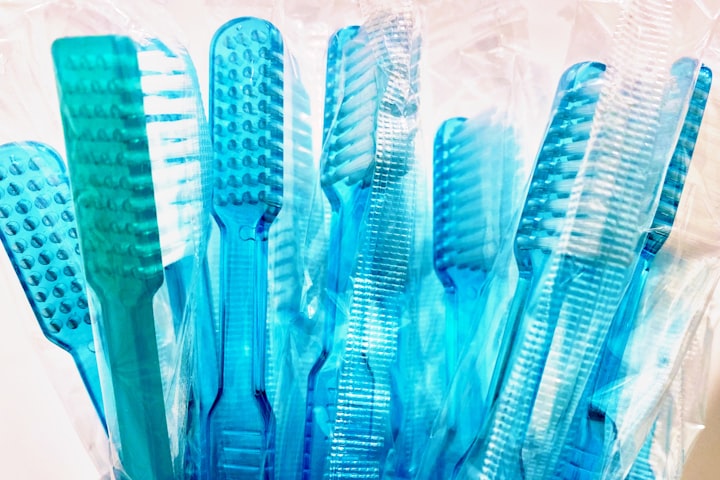
ABS (Acrylonitrile Butadiene Styrene):
ABS (Acrylonitrile Butadiene Styrene) is a thermoplastic polymer that is known for its high impact resistance, toughness, and durability. It is commonly used in the manufacturing of a wide variety of products such as automotive parts, electronic devices, toys, and household appliances.
ABS is a terpolymer, meaning it is made up of three different monomers: acrylonitrile, butadiene, and styrene. These monomers are combined in a process called copolymerization to create a material that has the desired properties of each component.
One of the key benefits of ABS is its high impact resistance, which makes it a popular choice for products that may be subject to impact or stress. It also has a good balance of stiffness and toughness, making it suitable for a wide range of applications.
ABS also has good chemical resistance and can withstand exposure to a wide range of chemicals, including acids and alkalis. It also has a relatively low melting point, which allows for easy processing and shaping of the material.
ABS is also a relatively inexpensive material, making it a cost-effective choice for many products. Additionally, it can be easily colored and is available in a wide range of finishes, including glossy, matte, and textured.
Some of the common applications of ABS are automotive parts, electronic devices, toys, household appliances, and many more.
Polycarbonate (PC):
Polycarbonate (PC) is a thermoplastic polymer that is known for its high strength, clarity, and heat resistance. It is commonly used in a wide variety of applications, including the manufacturing of safety glasses, electronic housings, and medical devices.
One of the key benefits of polycarbonate is its high impact resistance, which makes it a popular choice for products that may be subject to impact or stress. It is also highly transparent, making it an excellent choice for applications such as safety glasses and electronic device housings where visibility is important.
Polycarbonate also has a high heat resistance and can withstand exposure to high temperatures without deforming or losing its properties. It also has excellent electrical insulation properties, making it a popular choice for electrical components.
Polycarbonate is also a relatively lightweight material, making it easy to handle and transport. It is also easy to process and shape, making it a versatile choice for a wide range of applications.
Some of the common applications of polycarbonate are safety glasses, electronic device housing, medical devices, automotive parts, and many more. It is also commonly used as a substitute for glass in certain applications, such as skylights, greenhouses, and other building materials.
Acetal (POM):
Acetal (POM) is a thermoplastic polymer that is known for its excellent dimensional stability, low friction, and resistance to wear. It is commonly used in a wide variety of applications, including the manufacturing of gears, bearings, and other mechanical parts.
One of the key benefits of Acetal is its low coefficient of friction, which makes it an ideal material for gears and bearings. It allows for smooth and efficient movement, which can result in less wear and tear on machinery, and longer lifespan for the parts.
Acetal also has excellent dimensional stability, meaning it maintains its shape and size under different temperatures, loads and humidity. This makes it suitable for applications where precise measurements are crucial.
Acetal is also resistant to a wide range of chemicals, including acids and bases, which makes it a suitable material for use in harsh environments. It also has a relatively low melting point, which allows for easy processing and shaping of the material.
Some of the common applications of Acetal include gears, bearings, and other mechanical parts, electrical components, and medical devices. It is also used in the manufacture of consumer goods such as zippers and buttons.
Nylon (PA):
Nylon (PA) is a thermoplastic polymer that is known for its high strength, durability, and resistance to abrasion. It is commonly used in a wide variety of applications, including the manufacturing of gears, bearings, and other mechanical parts, as well as in the production of fibers for textiles and rope.
One of the key benefits of Nylon is its high strength-to-weight ratio, which makes it a popular choice for parts that need to be lightweight yet strong, such as gears and bearings. Nylon also has a high abrasion resistance, which makes it a suitable material for parts that will be subject to wear and tear.
Nylon is also a versatile material that can be easily processed using a variety of techniques, including injection molding, extrusion, and blow molding. It is also easy to dye, which makes it suitable for use in a wide range of applications.
Nylon also has a relatively low coefficient of friction, which makes it suitable for applications where smooth movement is required, such as gears and bearings. It also has good chemical resistance, making it a suitable material for use in harsh environments.
Some of the common applications of Nylon include gears, bearings, and other mechanical parts, fibers for textiles and rope, automotive parts, and electrical components. Nylon is also used for manufacturing consumer goods such as bags, gears, and gears and in 3D printing.
Polyphenylene Oxide (PPO):
Polyphenylene oxide (PPO) is a thermoplastic polymer that is known for its high strength, stiffness, and heat resistance. It is commonly used in the manufacturing of electrical components, such as connectors and switches, as well as in automotive parts, and household appliances.
One of the key benefits of PPO is its high heat resistance, which makes it a popular choice for electrical components that may be subject to high temperatures. It also has a high stiffness-to-weight ratio, which makes it a suitable material for parts that need to be lightweight yet strong.
PPO also has good chemical resistance, making it a suitable material for use in harsh environments. It also has excellent electrical insulation properties, making it a popular choice for electrical components.
PPO is also a relatively lightweight material, making it easy to handle and transport. It is also easy to process and shape, making it a versatile choice for a wide range of applications.
Some of the common applications of PPO include electrical components such as connectors and switches, automotive parts, household appliances and other engineering components. PPO is also used in the production of fibers for textiles.
Polysulfone (PSU):
Polysulfone (PSU) is a thermoplastic polymer that is known for its high temperature resistance, toughness, and chemical resistance. It is commonly used in the manufacturing of medical devices, electrical components, and automotive parts.
One of the key benefits of PSU is its high temperature resistance, which allows it to maintain its properties even in extreme temperatures. It also has excellent chemical resistance and can withstand exposure to a wide range of chemicals, including acids and bases, making it a suitable material for use in harsh environments.
PSU also has a high toughness, which means it can withstand a lot of stress without breaking or deforming. It also has good dimensional stability, meaning it maintains its shape and size under different temperatures, loads and humidity.
PSU is also a relatively lightweight material, making it easy to handle and transport. It is also easy to process and shape, making it a versatile choice for a wide range of applications.
Some of the common applications of PSU include medical devices, electrical components, automotive parts, heat exchangers, and other industrial applications. It is also used in the aerospace industry for applications that require high temperature resistance and mechanical strength.
Polyethylene Terephthalate (PET):
Polyethylene Terephthalate (PET) is a thermoplastic polymer that is known for its high strength, clarity, and resistance to impact. It is commonly used in the manufacturing of bottles, films, and fibers for textiles, as well as in other applications such as food packaging, industrial fibers, and engineering resins.
One of the key benefits of PET is its high strength, which makes it suitable for use in a wide range of applications, such as bottles and packaging. It also has a high resistance to impact, which makes it suitable for use in products that may be subject to impact or stress.
PET also has excellent clarity, which makes it an excellent choice for applications such as packaging and fibers where visibility is important. It also has a good barrier properties that protect the contents from moisture, gases, and light.
PET is also a relatively lightweight material, making it easy to handle and transport. It is also easy to process and shape, making it a versatile choice for a wide range of applications.
Some of the common applications of PET include bottles, films, fibers for textiles, packaging, industrial fibers, and engineering resins. It is also widely used in the food and beverage industry for packaging of drinks and food.
Polypropylene (PP):
Polypropylene (PP) is a thermoplastic polymer that is known for its high strength, flexibility, and resistance to chemicals. It is commonly used in the manufacturing of packaging, automotive parts, fibers for textiles, and a wide range of other applications.
One of the key benefits of PP is its high strength and flexibility, which makes it suitable for use in a wide range of applications, such as packaging, automotive parts, and fibers for textiles. It also has a high resistance to chemicals, making it suitable for use in harsh environments.
PP is also a relatively lightweight material, making it easy to handle and transport. It has good resistance to impact and high flexibility, which makes it suitable for use in products that may be subject to impact or stress.
PP also has excellent thermal properties, which allows it to maintain its properties even in extreme temperatures. It is also easy to process and shape, making it a versatile choice for a wide range of applications.
Some of the common applications of PP include packaging, automotive parts, fibers for textiles, household appliances, and many more. It is also used in the production of ropes, outdoor furniture, and various types of containers.






Comments
There are no comments for this story
Be the first to respond and start the conversation.